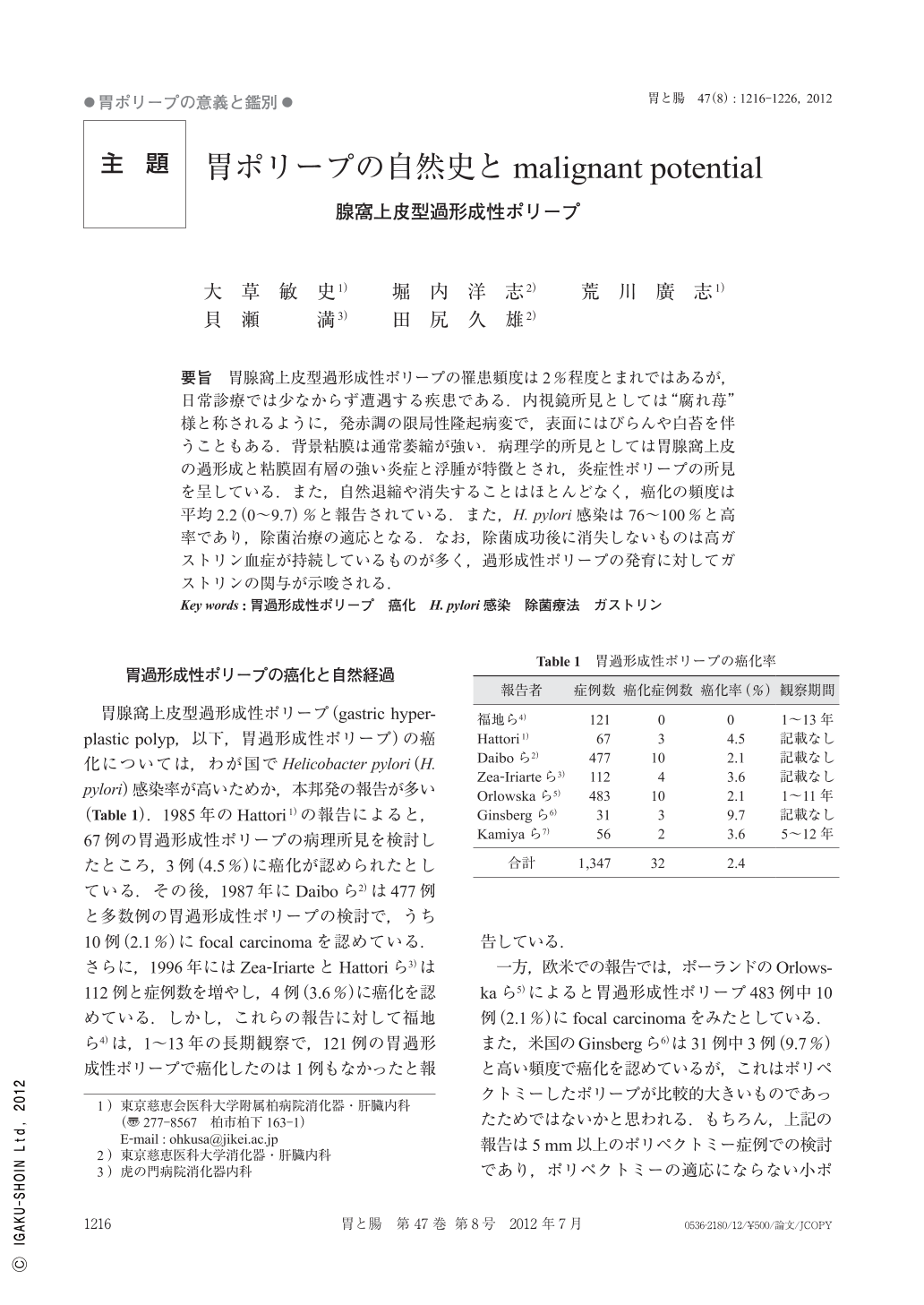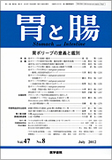Japanese
English
- 有料閲覧
- Abstract 文献概要
- 1ページ目 Look Inside
- 参考文献 Reference
- サイト内被引用 Cited by
要旨 胃腺窩上皮型過形成性ポリープの罹患頻度は2%程度とまれではあるが,日常診療では少なからず遭遇する疾患である.内視鏡所見としては“腐れ苺”様と称されるように,発赤調の限局性隆起病変で,表面にはびらんや白苔を伴うこともある.背景粘膜は通常萎縮が強い.病理学的所見としては胃腺窩上皮の過形成と粘膜固有層の強い炎症と浮腫が特徴とされ,炎症性ポリープの所見を呈している.また,自然退縮や消失することはほとんどなく,癌化の頻度は平均2.2(0~9.7)%と報告されている.また,H. pylori感染は76~100%と高率であり,除菌治療の適応となる.なお,除菌成功後に消失しないものは高ガストリン血症が持続しているものが多く,過形成性ポリープの発育に対してガストリンの関与が示唆される.
Gastric hyperplastic polyps represent the commonest polyp in the stomach, however they are rare, found in only about 2% of cases. It is a disease not encountered much in clinical practice. The endoscopic finding is a red polyp like a decaying strawberry. A flare-like localized upheaval lesion. It may be accompanied by a sore and white moss on the surface. The background mucosa usually appears as atrophic gastritis. The pathological finding presents an inflammatory polyp with hyperplasia of the foveolar epithelium and strong inflammation and edema of the mucosa. In addition, it is rare for this lesion to naturally decrease in size or disappear. An average of 2.2% of cases undergo malignant transformation. This is reported as(0~9.7%). H. pylori infection associated with the hyperplastic polyps occurs at a high rate, reported to be 76~100%. H. pylori eradication therapy is a treatment for these hyperplastic polyps. In non-responsive cases which do not disappear after success in H. pylori eradication, hypergastrinemia usually continues. Therefore, gastrin is suggested at the cause of the growth of the hyperplastic polyp.

Copyright © 2012, Igaku-Shoin Ltd. All rights reserved.


